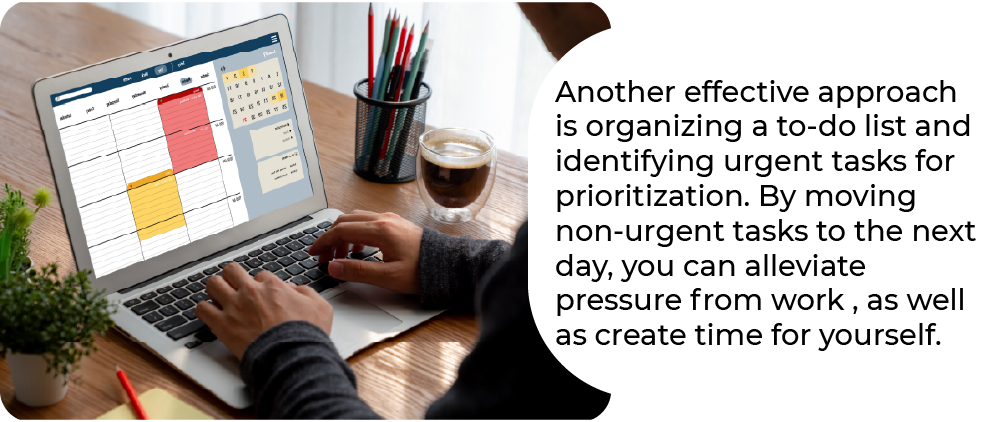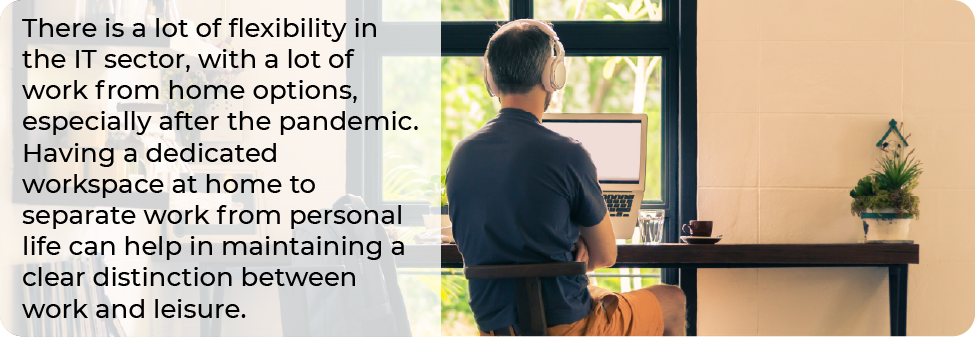
Every industry is dependent on IT services one way or another in today’s digital and technology-oriented world, and these services need to be provided promptly and efficiently. The rising demand for IT services, coupled with the ongoing competition among IT professionals to stay ahead in the industry, adds an overwhelming amount of pressure. This requires adeptly managing, organizing and prioritizing accordingly to attain the correct work-life balance. Here are some guidelines adapted to the challenges of the IT sector.
1. Scheduling and Time Management

Upon recognizing this imbalance, it’s essential to promptly reevaluate your schedule. Another effective approach is organizing a to-do list and identifying urgent tasks for prioritization.

However, it is also important to realize when procrastination is taking over, at which point one must address the task promptly. Procrastination of work until the last moment leads to increased stress. Therefore, another effective strategy for managing another way to manage work is dividing up into smaller tasks over time. This not only reduces the pressure associated with looming deadlines but also allows for better organization and focus on each component of the project. Additionally, dividing tasks into manageable portions makes the overall workload more approachable and increases the likelihood of successful completion.
2. Work surroundings

After finishing with work hours, it’s essential to transition into personal time by setting clear boundaries. This can involve physically leaving the workspace, turning off work-related devices, and engaging in other activities that signal the end of the workday, promoting a healthier work-life balance.
3. Support from employers
It is equally important for companies and employers to actively support their employees. Being able to openly communicate with your employer about your workload capacity is an essential aspect of a healthy relationship with an employing company. Avoid making commitments that could lead to excessive workload and burnout. Establishing realistic deadlines for tasks is crucial in alleviating pressure and promoting a healthy mental state. This collaboration ensures that employer’s expectations align with the employees’ capabilities, contributing to a positive work environment and overall well-being.

Such facilities increase employee satisfaction and contribute to a more productive and sustainable work culture.
4. Using technology and resources
Leveraging technology resources to mitigate workload in the IT sector increases efficiency. Being flexible and open to rapidly changing technologies can greatly help reduce stress as they can be utilized to streamline work processes as well as manage some daily tasks.
Moreover, using collaboration tools like Slack, Microsoft Teams etc. to effectively facilitate communication for projects can streamline workflows and keep everyone on the same page. This way, work can be delegated easily and effectively amongst the team without the need to overwhelm oneself. Conducting regular retrospectives with your team to assess progress and provide feedback to each other aids in performance optimization as a team as well as an individual employee.
Managing stress is an important aspect of improving the work-life balance. Being stressed about work can be managed by increasing one’s productivity and efficiency. Using technology and collaboration tools are a great way to divide and manage tasks, and minimize workload and the accompanying stress. Improving on other aspects of life such as a healthy diet, exercise and mediation can greatly help achieving this balance. However, finding the right balance is an ongoing process that requires adjustments based on the evolving demands of the job and personal circumstances. Achieving this balance requires being personally committed to it, and actively working towards it.








